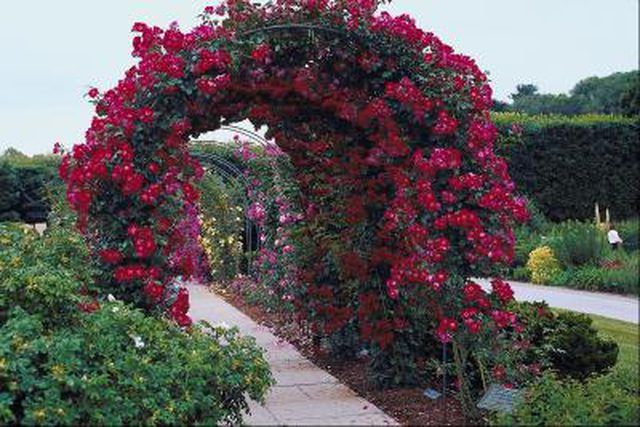Bulbs
Flower Basics
Flower Beds & Specialty Gardens
Flower Garden
Garden Furniture
Garden Gnomes
Garden Seeds
Garden Sheds
Garden Statues
Garden Tools & Supplies
Gardening Basics
Green & Organic
Groundcovers & Vines
Growing Annuals
Growing Basil
Growing Beans
Growing Berries
Growing Blueberries
Growing Cactus
Growing Corn
Growing Cotton
Growing Edibles
Growing Flowers
Growing Garlic
Growing Grapes
Growing Grass
Growing Herbs
Growing Jasmine
Growing Mint
Growing Mushrooms
Orchids
Growing Peanuts
Growing Perennials
Growing Plants
Growing Rosemary
Growing Roses
Growing Strawberries
Growing Sunflowers
Growing Thyme
Growing Tomatoes
Growing Tulips
Growing Vegetables
Herb Basics
Herb Garden
Indoor Growing
Landscaping Basics
Landscaping Patios
Landscaping Plants
Landscaping Shrubs
Landscaping Trees
Landscaping Walks & Pathways
Lawn Basics
Lawn Maintenance
Lawn Mowers
Lawn Ornaments
Lawn Planting
Lawn Tools
Outdoor Growing
Overall Landscape Planning
Pests, Weeds & Problems
Plant Basics
Rock Garden
Rose Garden
Shrubs
Soil
Specialty Gardens
Trees
Vegetable Garden
Yard Maintenance
How to Grow an Arbor Climbing Rose in Northern California
How to Grow an Arbor Climbing Rose in Northern California. Roses happily climbing an arbor is a sight most gardeners would love to see in their backyards, but the process of growing roses on an arbor can be confusing. Careful planning is the key to removing the guesswork from growing climbing roses, even in areas such as Northern California, which...

Roses happily climbing an arbor is a sight most gardeners would love to see in their backyards, but the process of growing roses on an arbor can be confusing. Careful planning is the key to removing the guesswork from growing climbing roses, even in areas such as Northern California, which luckily possesses some of the easiest conditions in which to grow roses.
Things You'll Need
A shovel or spade
Sturdy twine
Garden gloves
Liquid fertilizer, 12-12-12
Pruning shears
Climbing Rose Culture 101
Choose a site for your arbor that will provide your roses with their basic growing needs, which include full sun (at least six hours per day) and rich, well-draining soil. Arrange for the soil at your chosen site to be tested by your county extension agency and follow any suggestions you receive on how to amend the soil for rose culture.
Choose your roses. There are many varieties of climbing roses that are hardy in Northern California, which encompasses U.S. Department of Agriculture plant hardiness zones 7 to 10, so your options are varied. A few tried and true favorites hardy in these zones include Lady Banks' rose (Rosa banksiae "Lutea"), which has double yellow blooms in mid- to late spring. It is a quick-growing rose with canes that can reach over 25 feet. The canes are very supple and nearly thornless, which makes it easy to train onto an arbor. New Dawn (Rosa "New Dawn") has large pink flowers and attractive, deep green foliage. It is a vigorous climber, and will scramble up any support it can find. Don Juan (Rosa "Don Juan") is a great choice for gardeners in Northern California who want a red climbing rose for their arbor. It is a repeat bloomer that is fairly disease-resistant, and will tolerate heat and cold.
Prepare your planting site by digging a hole twice as deep and wide as the roots of your rose, at the foot of each side of your arbor. You can start by planting on just one side of your arbor if you prefer, but you will get the most coverage of your arbor if you plant on both sides.
Plant your roses early in the morning, on an overcast day if possible, to minimize shock. In Northern California, plant in early spring, once the risk of frost has passed. Water deeply and feed with a liquid fertilizer especially designed for roses. Lightly mulch around the base of your roses to help them retain moisture and discourage weeds. Care for your roses with regular watering (be sure not to over-water) and applications of fertilizer in May and July. Monitor for pests and mildew, and treat if needed.
Train your roses to climb their arbor by using sturdy twine to tie the canes to the arbor supports, making sure not to tie too tightly. You should be able to slip a finger easily in between the rose and the support. For the first two or three seasons, pay close attention to training your roses as the canes grow. Rose canes are easier to bend around the arbor when they are young, so regular sessions of tying will provide better results than waiting until the canes become woodier late in the season.
Prune the roses minimally for the first two or three seasons. Usually, only clipping spent blooms is necessary. When the roses are dormant, which in Northern California occurs between November and February, prune dead or weak canes during the first few years. Once the roses are established, more aggressive pruning can be done during dormancy to curb overly-aggressive growth.
Tips & Warnings
Check for underground cables before starting to dig.
Keep fertilizer out of the reach of children and pets, because it could be harmful to them if ingested.
Use caution if using a ladder to prune rose canes to avoid injury.